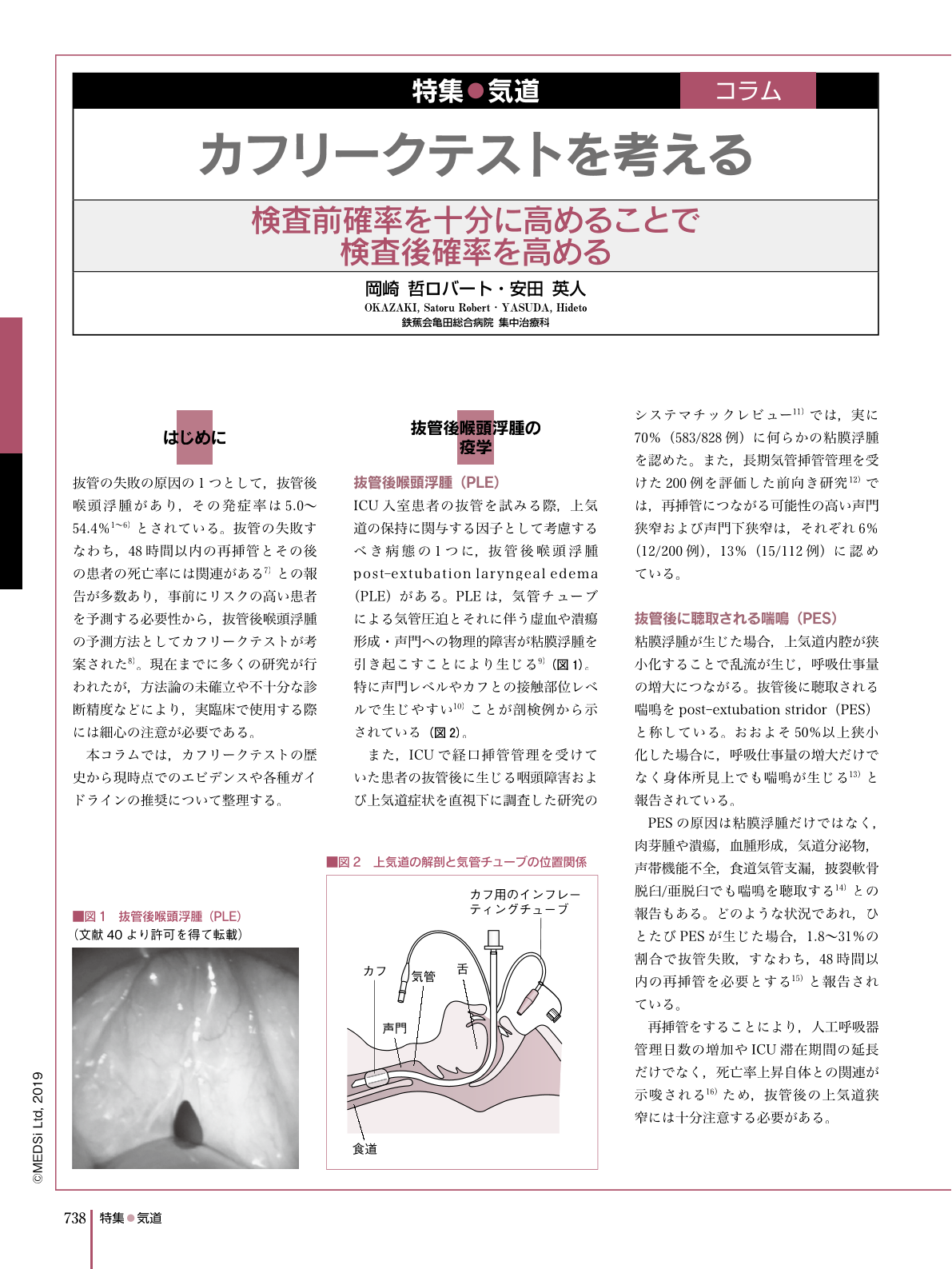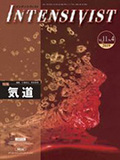Japanese
English
- 有料閲覧
- Abstract 文献概要
- 1ページ目 Look Inside
- 参考文献 Reference
はじめに
抜管の失敗の原因の1つとして,抜管後喉頭浮腫があり,その発症率は5.0〜54.4%1〜6)とされている。抜管の失敗すなわち,48時間以内の再挿管とその後の患者の死亡率には関連がある7)との報告が多数あり,事前にリスクの高い患者を予測する必要性から,抜管後喉頭浮腫の予測方法としてカフリークテストが考案された8)。現在までに多くの研究が行われたが,方法論の未確立や不十分な診断精度などにより,実臨床で使用する際には細心の注意が必要である。
本コラムでは,カフリークテストの歴史から現時点でのエビデンスや各種ガイドラインの推奨について整理する。
While intubated, the endotracheal tube puts pressure on surrounding tissue and may cause mucosal edema which can lead to post-extubation laryngeal edema (PLE). PLE can cause failure of extubation, and occurs in 5.0-54.4% of patients after extubation. In a majority of studies, failed extubation is defined as re-intubation within 48 hours after extubation. A relationship between re-intubation and increased mortality has been shown. To identify patients at risk of failure before extubation, Potgieter described the cuff leak test in 1988, and Miller et al revised the method to be quantitative in 1996. Although many studies have been done on the cuff leak test, there are some critical limitations including insufficient diagnostic accuracy. This column introduces the history of the cuff leak test, clinical studies, and guidelines and precautions for its use.

Copyright © 2019, MEDICAL SCIENCES INTERNATIONAL, LTD. All rights reserved.


